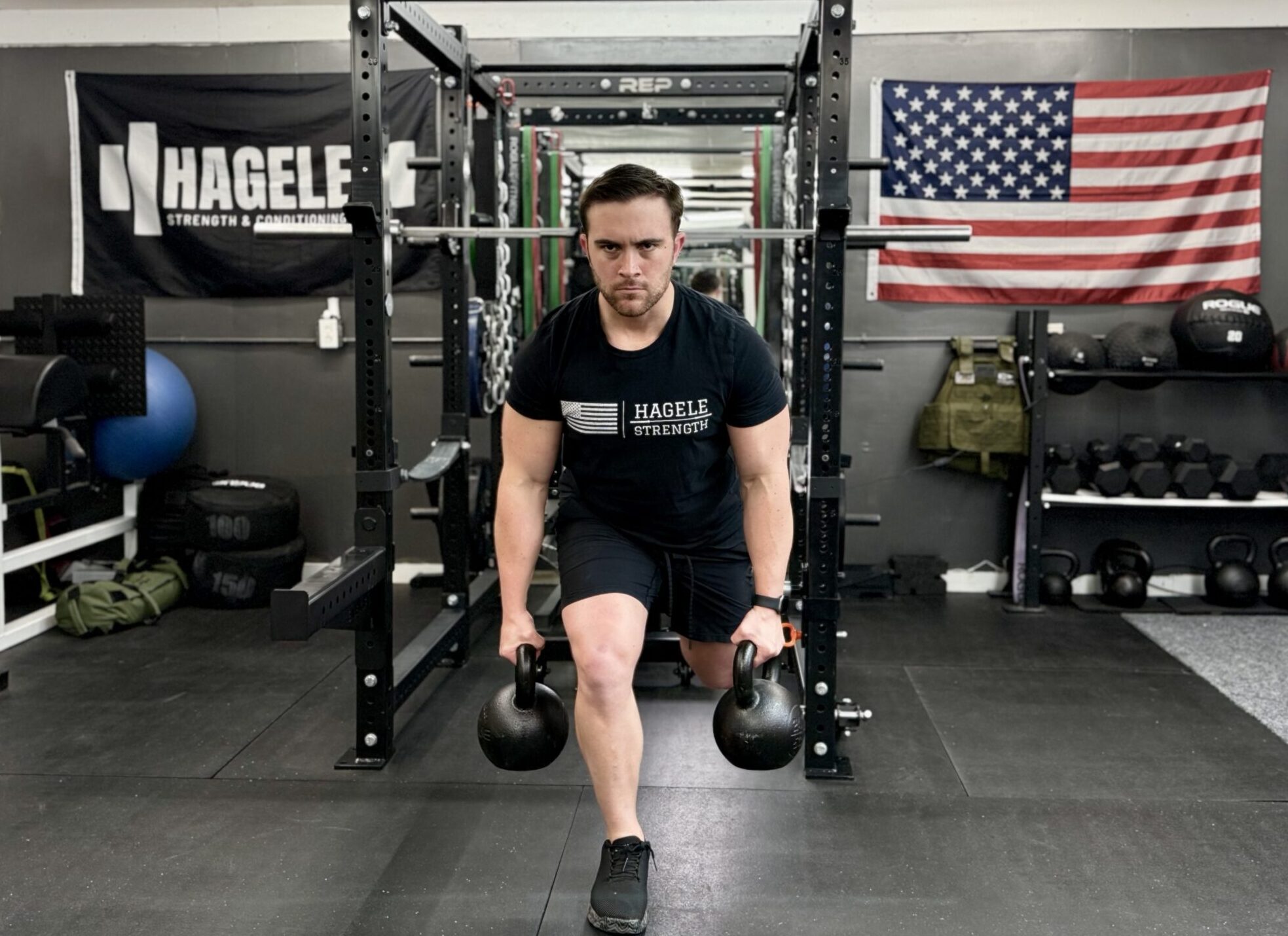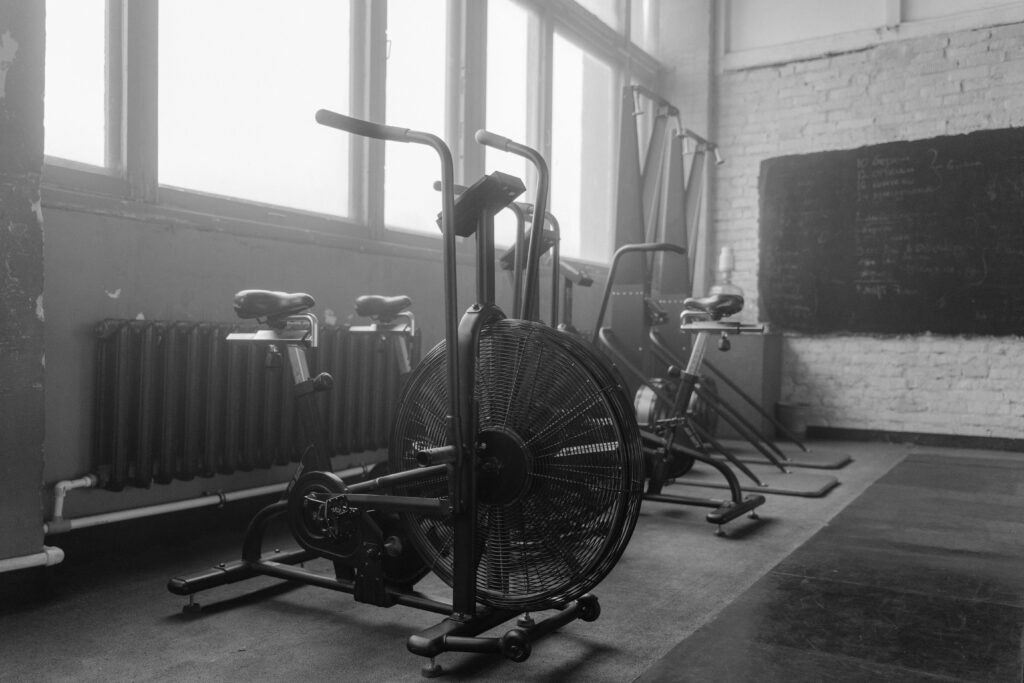I don’t treat single-leg training as optional. Every program I write includes it. At minimum, one unilateral variation goes in each week, often two. And during certain blocks, I’ll even replace bilateral squats entirely with heavy or eccentric single-leg work for 4–8 weeks at a time.
Why? Because unilateral training develops qualities that bilateral lifts alone cannot. Here’s the case.
1. Force Production That Transfers Athletic Movements
Outside of powerlifting, almost every task you perform, be it running, cutting, changing direction, or accelerating, happens with one leg producing force while the other stabilizes. Bilateral strength is important, but it doesn’t cover this demand.
Single-leg lifts train force production in the exact positions you use in sport and daily movement. Step-ups, split squats, and lunges load the hip and knee through ranges that mimic sprinting and cutting mechanics. Athletes who can express force unilaterally are faster, more stable, and better prepared to carry strength out of the gym.
Unilateral strength deficits are linked with reduced sprint performance and change-of-direction ability in field athletes (Bishop et al., 2022).
2. Heavy Training Without Axial Fatigue
Barbell squats and deadlifts are staples, but they load the spine heavily. Over time, this limits how much volume you can accumulate. Unilateral training provides a way to load the legs maximally while reducing axial stress.
Example from my programming: in hypertrophy blocks, I’ll swap dynamic effort squats for barbell Bulgarian split squats with a 4–6 second eccentric. The legs get adequate stimulus, but recovery is easier, and the spine gets a break from constant heavy loading.
This is why I sometimes program heavy step-ups or Bulgarians even in place of max-effort bilateral lifts. You can still push strength forward without always defaulting to the back squat.
3. Hypertrophy and the Repetition Method
Single-leg lifts are ideal for higher-rep and higher-volume training. They allow greater range of motion and longer time under tension compared to most bilateral lifts. That makes them perfect for the Repetition Method within a conjugate framework.
Slow eccentrics, paused split squats, or high-rep lunges extend the set duration and load the muscles differently. That combination is potent for hypertrophy and structural balance.
Unilateral vs bilateral resistance training yield similar hypertrophy, but strength gains are task-specific (bilateral strength improved more with bilateral training; unilateral strength improved more with unilateral work) (Kassiano et al. 2024).
4. Joint Health and Durability
The stabilizing demand of unilateral training strengthens the muscles around the hips, knees, and ankles. This isn’t about “prehab”, it’s about long-term durability. By forcing the hip abductors, adductors, and deep stabilizers to engage under load, single-leg lifts reinforce the structures that keep you healthy under heavier bilateral training and during running.
Weakness and asymmetry in hip abductors/adductors are associated with increased injury risk in runners and field athletes (Niemuth et al., 2005).
Addressing Asymmetries
Finally, single-leg training exposes and corrects side-to-side differences. While not the primary reason I program it, it’s a clear benefit. Most people have a dominant side, and left unaddressed, those imbalances affect running mechanics, lifting efficiency, and injury risk. Tracking unilateral strength and keeping the difference within ~10% is a practical guideline.
Lower-limb asymmetry shows moderate evidence linking to increased injury risk in sport (Helme et al., 2021).
How I Program It
- Baseline: At least one single-leg lift per week for 3-5 sets.
- Optimal: Two variations per week if recovery and schedule allow.
- Block Substitution: Replace bilateral squats with unilateral work for 4–8 weeks, 1–2 times per year.
- Hypertrophy: Barbell Bulgarians with slow eccentrics (4–6s lowers)
- Strength: Heavy step-ups or Bulgarians for 5s
- Repetition Method: High-rep split squats or lunges for volume and durability
The Bottom Line
Single-leg training is not just accessory work. It builds force production that carries into sport, lets you train the legs hard without constant axial fatigue, creates hypertrophy through the repetition method, keeps the joints durable, and reduces asymmetries.
That’s why I program it every week, and why, if you want strength that lasts and transfers, you should too.
References
- Bishop C, Read P, Bromley T, Brazier J, Jarvis P, Chavda S, Turner A. The Association Between Interlimb Asymmetry and Athletic Performance Tasks: A Season-Long Study in Elite Academy Soccer Players. J Strength Cond Res. 2022 Mar 1;36(3):787-795. doi: 10.1519/JSC.0000000000003526. PMID: 32108721.
- Kassiano W, Nunes JP, Costa B, Ribeiro AS, Loenneke JP, Cyrino ES. Comparison of Muscle Growth and Dynamic Strength Adaptations Induced by Unilateral and Bilateral Resistance Training: A Systematic Review and Meta-analysis. Sports Med. 2025 Apr;55(4):923-936. doi: 10.1007/s40279-024-02169-z. Epub 2025 Jan 10. PMID: 39794667.
- Niemuth PE, Johnson RJ, Myers MJ, Thieman TJ. Hip muscle weakness and overuse injuries in recreational runners. Clin J Sport Med. 2005 Jan;15(1):14-21. doi: 10.1097/00042752-200501000-00004. PMID: 15654186.
- Helme M, Tee J, Emmonds S, Low C. Does lower-limb asymmetry increase injury risk in sport? A systematic review. Phys Ther Sport. 2021 May;49:204-213. doi: 10.1016/j.ptsp.2021.03.001. Epub 2021 Mar 8. PMID: 33770741.





